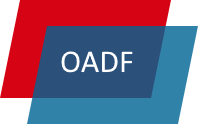The 17th Open Auto Drive Forum event on May 17, 2022, was the first OADF event since 2019 where participants met on-site. The on-site portion took place in Frankfurt, Germany, where approximately 30 participants gathered. Another 130 people attended the meeting remotely.
The OADF speaker and co-chair of SENSORIS, Andras Csepinszky of NNG, warmly welcomed participants to the hybrid meeting and introduced the history and goals of the OADF forum and events.
Several experts from government, industry and academia were invited for the 17th OADF. Suku Phull from the Department for Transport UK reported on the situation in the UK and presented cross-border cooperative intelligent transport systems (C-ITS) as a promising approach to improve road safety and congestion statistics. Torsten Geissler from the Federal Highway Research Institute in Germany (BASt) reported on the Connected Cooperative and Automated Mobility (CCAM) partnership. This major program aims, among other things, at safe and trustworthy interaction between road users, vehicles, infrastructure and services, as well as improved synergies between public and private investment plans to further develop vehicle and infrastructure technologies. Chris Thibodeau, CEO of Ushr, shared the mission of the Digital Map Platform (DMP) to provide an HD data platform that maps the world. He gave an overview of DMP and its shareholders and explained the great potential of HD map applications. Siddartha Khastgir, Head of Verification & Validation, Intelligent Vehicles at WMG/ University of Warwick, presented Operation Design Domains (ODD) for automated driving systems. He made several recommendations on things to consider when working on an ODD, such as maintaining consistency between map standards and ODD attributes.
Following the tradition, the various standardization organizations briefly presented their organizations and provided information on their recent activities in automated driving:
- Jean-Charles Pandazis of ERTICO reported on ADASIS v3.2, which was released internally, and on the planning of ADASIS v3.3, which will include a low-level protocol and integration of auxiliary providers. ADASIS is a success story celebrating its 20th Anniversary at next GA on 28-29 June in Brussels.
- Benjamin Engel of ASAM reported on the challenges in developing OpenDRIVE to provide realistic representations of real-world data at a larger scale and how these are being addressed.
- Martin Schleicher, Elektrobit’s representative to NDS, gave an overview of recent progress on NDS.Live, which is now open for evaluation.
- András Csepinszky of NNG reported on the achievements of SENSORIS and on collaboration with related activities such as OADF.
- Satoru Nakajo from the University of Tokyo reported on SIP-adus with a focus in the Field Operational Test (FOT) 2021, which is now completed, and the use of ADASIS in the FOT.
- Matthias Unbehaun from TISA provided information on the progress of TPEG3 development and AD use cases guiding the development.
At the end of the day, the attendees were invited to on-site workshops on map safety security and the OADF ecosystem. Teaser presentations by Steffen Kuhn of Elektrobit, Andras Csepinszky and Matthias Unbehaun led to lively discussions and a fruitful exchange of information between the participants.
The OADF is now in its seventh year and continues to attract great interest. A second OADF event in 2022 is already planned, the date and format of which will be announced in due course.
